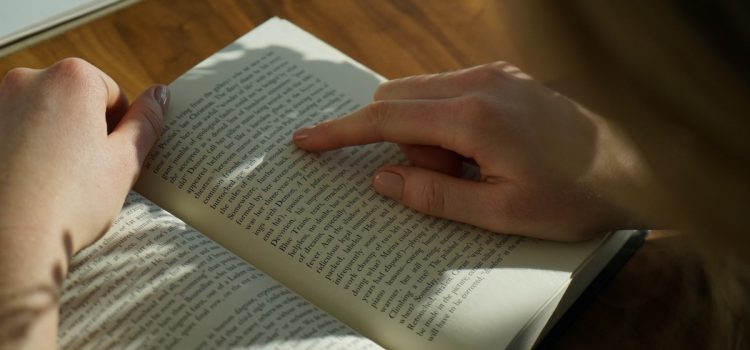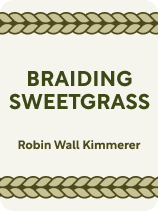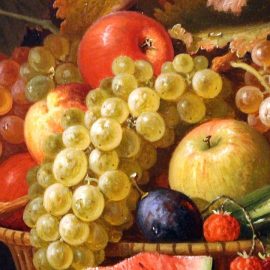

This article is an excerpt from the Shortform book guide to "Braiding Sweetgrass" by Robin Wall Kimmerer. Shortform has the world's best summaries and analyses of books you should be reading.
Like this article? Sign up for a free trial here.
What is Braiding Sweetgrass by Robin Wall Kimmerer about? What are the main takeaways of the book?
In Braiding Sweetgrass, Robin Wall Kimmerer explains how three sources of knowledge show us how to flourish through a practice of mutual care. She dives deep into the three sources of knowledge, which are plants, Anishinaabe Indigenous worldviews, and science.
Read below for a brief overview of Braiding Sweetgrass.
Braiding Sweetgrass by Robin Wall Kimmerer
In a society troubled by overconsumption and disconnection, what are plants, Anishinaabe Indigenous worldviews, and science all trying to teach us about restoring balance?
In Braiding Sweetgrass, Robin Wall Kimmerer contends that these three sources of knowledge show us how to flourish by practicing mutual care: acting in ways that help us as well as other people and the environment.
As our industrial society puts increasing stress on ecosystems and climate change threatens the well-being of us all, we must shift from a mindset of consumption and competition to one recognizing our interdependence. Then we can practice mutual care to enable all living beings to thrive.
Kimmerer is a member of the Citizen Potawatomi Nation and a professor at the State University of New York College of Environmental Science and Forestry (SUNY-ESF) in Syracuse. She received a MacArthur Fellowship in 2022 for her work in education, writing, and outreach in Indigenous communities. As the founder and director of the Center for Native Peoples in the Environment at SUNY-ESF, Kimmerer teaches environmental studies to Indigenous students and helps science benefit from Indigenous knowledge.
Published in 2013, Braiding Sweetgrass is a collection of essays that integrate Kimmerer’s personal experiences, Anishinaabe Indigenous worldviews, and scientific knowledge. These three components represent the strands of a braid of sweetgrass, a sacred plant in the Indigenous Potawatomi culture. Like the strands of sweetgrass, the three knowledge sources are woven together to create something sacred: a deeper understanding of how we can practice mutual care. (Shortform note: The Potawatomi are a subgroup of the Anishinaabe people, currently in the Northeast United States.)
Braiding Sweetgrass became a New York Times bestseller in February 2020, seven years after its initial publication, and it stayed on the bestseller list for 129 weeks. One explanation for this is that the book resonated with readers during the Covid-19 pandemic when many people were feeling isolated and anxious about the world.
How Plants Teach Us About Mutual Care
Observing plants provides insight into how mutual care helps individuals and communities flourish. Plants engage cooperatively in symbiotic relationships, collective solidarity, natural succession, and generosity, which can inspire us to practice mutual care with other humans as well as non-human beings.
How Traditional Indigenous Culture Teaches Mutual Care
Indigenous culture is the second source of inspiration and knowledge for how to practice mutual care with other beings. Kimmerer draws on three main areas of Indigenous culture that embody this concept: stories and language, honorable harvesting, and ceremony.
How Science Can Help Us Practice Mutual Care
Plants and Indigenous wisdom can teach us to practice mutual care, but science also provides useful tools for mutual care. Species identification and research enables mutual care by increasing your familiarity with the natural world and providing evidence for how to be better land stewards.
Benefits of Practicing Mutual Care
The previous sections described how plants, Indigenous wisdom, and science traditionally practice mutual care, but why is mutual care so important? Kimmerer also says that mutual care supports the long-term vitality of life on Earth, feelings of abundance and wealth, and a sustainable economy.
Strategies for Enacting Mutual Care With All Living Beings
Kimmerer recommends the following strategies to encourage mutual care with other people and other life forms, such as plants and animals, in your community.
- Express gratitude
- Tell stories
- Steward the land
- Advocate for the land
- Use resources mindfully
- Give generously

———End of Preview———
Like what you just read? Read the rest of the world's best book summary and analysis of Robin Wall Kimmerer's "Braiding Sweetgrass" at Shortform.
Here's what you'll find in our full Braiding Sweetgrass summary:
- What plants, Indigenous worldviews, and science can teach us about restoring balance
- Why we must recognize our interdependence on others and the environment
- Strategies to help you practice mutual care in your own life






